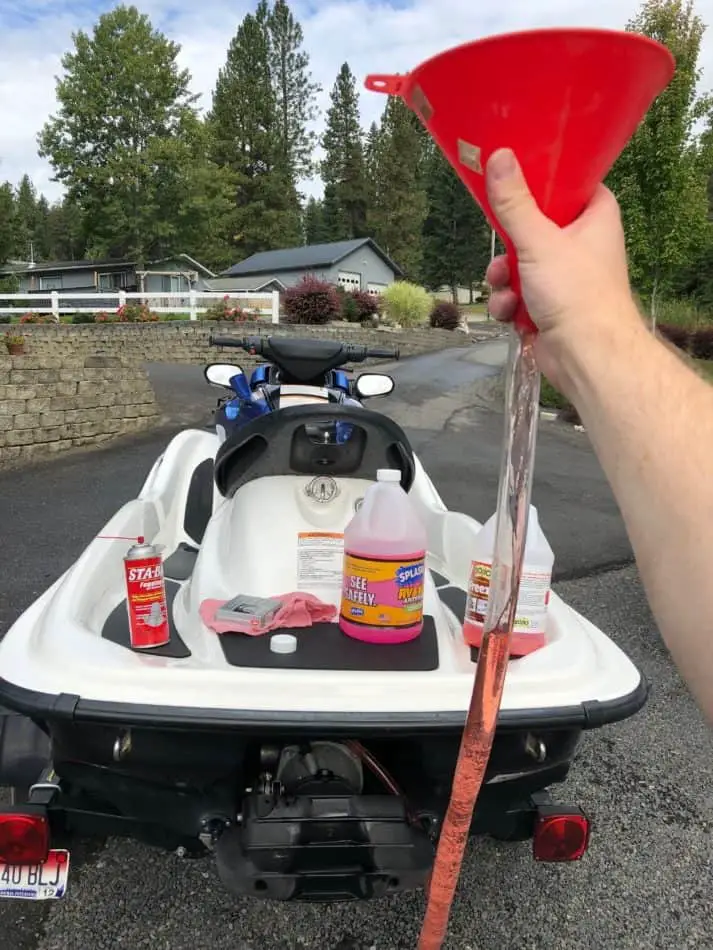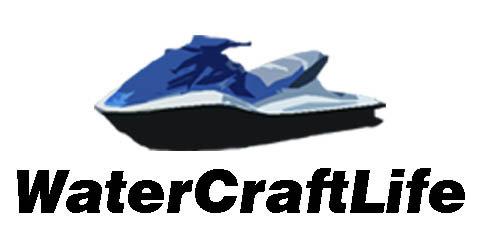Taking care of your waverunner or jet ski is very important to its lifespan. If you live in an area where you will pull your watercraft out of the water for extended periods of time and not ride it, you will need to winterize it even if it wont freeze. If you don’t live in an area that will freeze and you store your waverunner for extended periods of time, there are still other things you need to do to winterize your craft.
Do you have to winterize a jet ski?
Yes, you absolutely have to winterize a jet ski or waverunner. Even if you are not in an area that will freeze, consider the other items that you will complete on your ski to winterize besides just antifreeze such as fogging the ski, or lubricating items.
Why should you winterize your jet ski?
Winterizing your jet ski will keep it performing top-notch, keep your engine or other items from freezing, and keep your gas fresh. If you have ever had to clean or rebuild a gummed up carb, you will thank me for winterizing your ski in the proper fashion.
Winterizing your jet ski does not take too much time, once you do it once or twice you will be able to do it in an hour or less depending on if you have a 2 stroke or 4.
Easy steps to Winterize your Jet Ski
Gas Maintenance
Keeping your gas fresh will keep your carburetors clear from any gumming as gas has a certain shelf life. This can be accomplished by running as much fuel out of the ski as possible, and using a fuel stabilizer such as our favorite here. Usually, on my last ride, I will fill the tank with the appropriate amount of stabilizer as you will need to run your ski to get it flowing through the carburetors.
Keeping your Ski from Freezing

This applies to both water inside and outside your boat. First, open your drain plugs and remove all of the water within your hull. If you do not have drain plugs, you will need to either tip your ski over or use a sponge and rag to remove all of the water. Also, remove it from the footwells and storage compartments.
You will want to keep your jet ski engine and components from freezing as well. This involves getting all of the water out of the engine and coolant system. In most skis, you can accomplish this by starting the ski and running RV antifreeze through the freshwater intake valve.
If you have a 2 stroke as well as my 4 stroke, you can dry start it and give it some blips of the throttle. This should purge most of the water.
On my Superjet, I have a freshwater flush kit installed that will accept a hose. On my Honda, I have a built in adapter that will accept a garden hose. I use a funnel and clear tubing to fill RV antifreeze into the engine until I see the red color antifreeze come out of the exit for the water cooling. You may need to start your ski to pump the liquid through the engine.
Cylinder Maintenance

Maintaining lubrication through winter will keep your pistons moving freely and unstuck. By removing your spark plugs, you can spray fogging oil into the cylinders to have a good coating. Always crank the ski a bit to get the oil all over the cylinder walls. When you put the spark plugs back on, put an old set of plugs in as the fogging oil is thick stuff and can cause the spark plugs to foul. If you have $15 dollar plugs on your ski, this can be an expensive mistake.
Lubricant
It is important to lubricate some items prior to wintertime such as the carburetors, steering, cables, driveshaft, and other moving parts. This will ensure they move freely when you get the jet ski out in the spring. Check your owners manual to determine what maintenance you should be performing prior to extended storage.
Change Oil
If you have a 4 stroke waverunner or jet ski, this is a good time to change the oil so it is ready to go in the spring. I will change both the oil and filter using an extractor pump to pump out of the engine. Buying your own pump and changing your own oil will pay for itself usually the first time. If you have a 2 stroke ski that is mix fuel or oil injected, you can ignore changing the oil as you will not need to.
Battery
Batteries do not do well in the cold especially if they sit. I did not remove batteries last year and ended up with two dead batteries that needed to be replaced. Make sure to remove your battery, store in a warm dry space such as a basement, and leave on a battery maintainer. This will keep your battery topped off and ready to go in the summer.
Removing your battery will be the last step after you have completed all items as you need to turn the crank for some items on the list. If you are storing your battery on a concrete floor, make sure to put a piece of wood between the battery and floor as the cold concrete can damage the battery.
Wash and Dry
Before you put your ski away for the season, make sure to wash, dry, and even wax the ski so when you get it out in the spring its ready to rip. Use an automotive car wash detergent and a good marine quality wax. Be careful while waxing of any graphics or black plastic that will be stained from the white wax. Use painters tape to block the areas you don’t want wax on.
Cover
I always store my ski’s in the garage, but still, make sure to cover them so dust or other items don’t get the ski dirty. We have stock OEM covers that work great. If you are storing outside, you will want to make sure they are covered. Over the cover usually, I will strap down a blue tarp just for extra protection.
Storage
You can store your ski either in your garage on a jet ski cart to save space, or on the trailer. If you don’t have inside storage, you can store outside at your house or at a paid storage facility.
If storing outside, theft is something to also think about, read our article on how to protect your ski from theft while it is out for winter storage.
Trailer
Your trailer hitch should be covered with a plastic bag so snow and ice don’t form and damage any of the parts. Also, take the time to grease the wheel bearings and any other parts on the trailer. We use this grease as it is suggested for marine applications. If you don’t already have one, a grease gun is required to grease fittings on your trailer as well as some on your ski.
Conclusion
It is very easy to maintain your jet ski for winter storage, and this task should take you very little time, but the reward for doing so can be a healthy reliable jet ski for many years to come.
Happy Riding!

